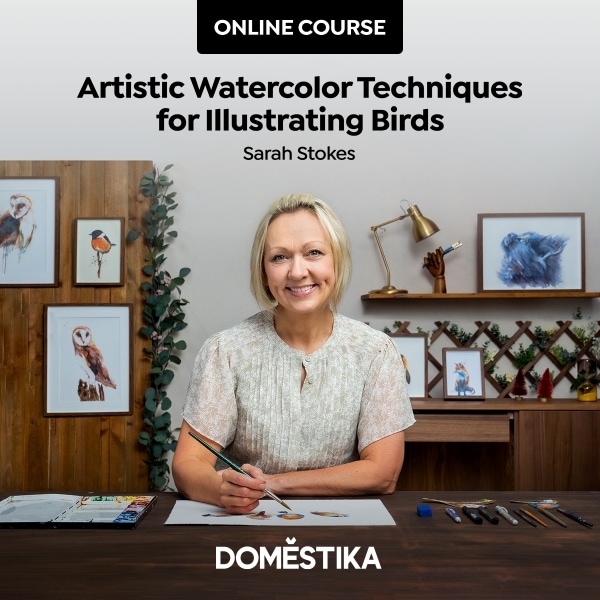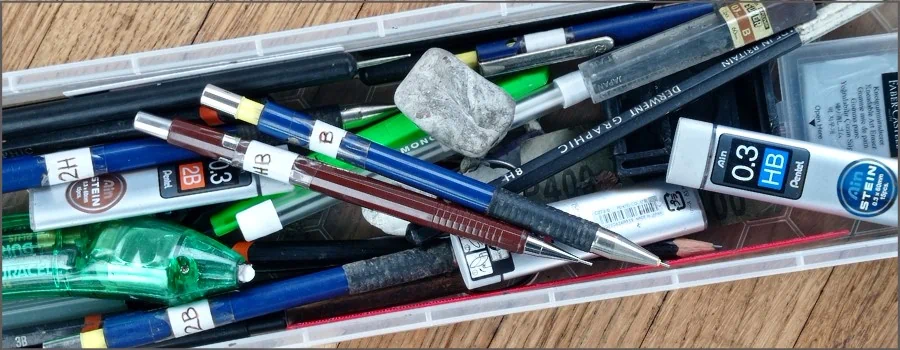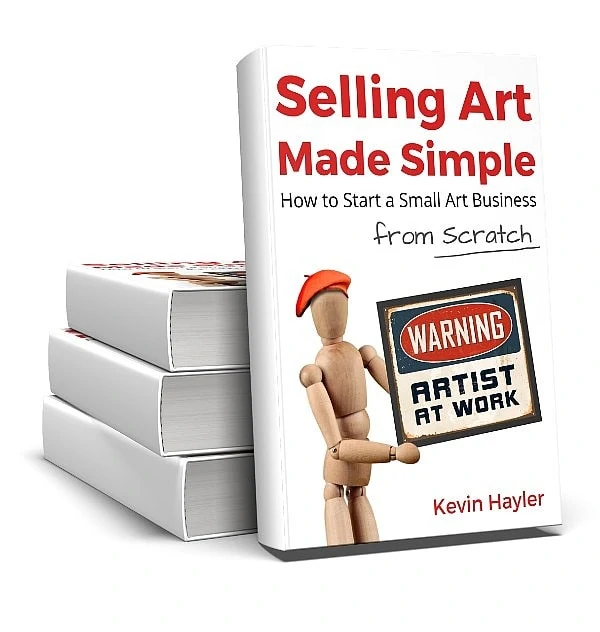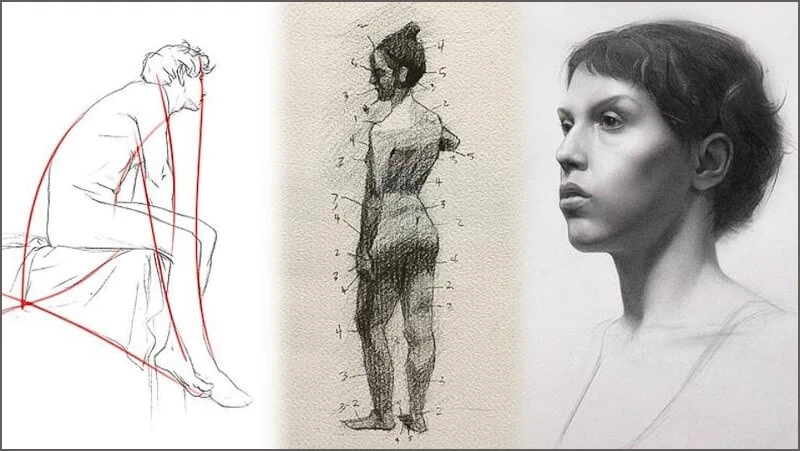Kevin Hayler: Professional Wildlife artist, author, and traveler.
There are many people who abhor the very idea of drawing from reference photos. They see it as a betrayal of real art. Others greatly admire the skill, patience, and dedication involved in copying faithfully and long to do the same thing. Who’s right?
Drawing from reference photos is bad practice when the artist is a slave to the photograph. It is poor practice to use other people’s photo references. Copying photos inhibits the artist from experimenting freely and stunts their ability to develop their own style.
With that said, if the artist is well aware of these pitfalls and knows how to compensate for lens distortion, photographic references are an invaluable tool.
So let’s dig deeper.
Disclaimer: When you buy something via my affiliate links I earn from qualifying purchases and sometimes earn a commission, at no extra cost to you. I am an Amazon Associate among others. I only recommend trusted sites.
Why Do People Draw From Reference Photos?
There’s no doubt that painting or drawing from photos is easier.
The Advantages of Drawing From Photographs:
- It’s static, the light stays the same and it’s far more comfortable to draw indoors,
- It’s easier to make an accurate and highly detailed drawing,
- The artist can stop and start as they wish and fit around a busy lifestyle,
- You can capture perspectives that are impossible to achieve in real life
The Disadvantages of Drawing From Photographs
- It’s hard to develop a unique style,
- There’s too much detail for the eye to filter,
- Lens distortion can ruin the image,
- Photographic references can look cheesy and fake as a work of art
There is every reason to use photographs. When a child first begins to draw realistically, what do they do? They copy from a comic or magazine, and I suppose these days from the web.
We grow up drawing from photos so it’s little wonder that it’s become second nature to most of us.
Do you lack confidence? Take a class and get into the habit of drawing. I found this class on , 115,028 students can’t all be wrong!
Besides who’s got the time to lug around art equipment and sit in a field all day? It makes more sense to take some photos and learn to draw and paint at home.
And what if you want to paint birds and animals? How are you going to do that? from stuffed specimens? Painting wildlife from life is a rare skill.
People learn by copying photos because that’s the only practical way to do it. They get some good results and that gives them the confidence to go further.
The question shouldn’t be why artists use photographs. but how do they use them?
Do Most Artists Draw From Reference Photos?
I hope this doesn’t spoil the dream for you but yes, they do. Very few artists paint or sketch from real life, especially among professionals.
Time is money in this life and when there’s a commercial incentive to cut corners then you’re going to take it. Few people have the time to paint ‘Plein air’ (outdoors) and fewer have the ability.
There is a myth surrounding artists that they are a breed apart. Many people assume that real artists ‘make it up’ or have a photographic memory. Copying is a dirty word, and copying from photos is little more than fraud.
That misplaced elitist snobbery based on nothing more than romanticism is enough to make some artists wary of revealing the truth behind their working methods.
I follow one artist who has no problem showing you how he works. Jason Morgan uses reference photos and traces.
The passionate tortured genius slaving away at his art (it’s always a ‘him’) is pure Hollywood. Everyone thinks of the madness of Van Gogh, in the form of Kirk Douglas most probably, and they project that nonsense and see it as a job description.
Artists use photography as an aid, before that they used optical devices. There would be no Vermeers or Canalettos without a camera obscura, and no dancing ballerinas by Degas without photography.
And not everything can be seen by the human eye. Photography allows us to catch the moment in a way the human eye can’t. Think of the depiction of galloping racehorses before cameras revealed the truth. Early attempts were laughable.
We take for granted that artists paint the way they do without realizing how photography influences everything, from composition to image cropping, and depth of field.
Try painting moving water, a laughing face, or wildlife in action, without the help of a camera. Photographs, used wisely, increase the scope of what’s possible.
Try these posts:
- How to Draw Water in Pencil: Drawing Water The Right Way
- Drawing Realistic Grass the Easy Way: For Beginners
Drawing From Photos Without Violating Copyright
That’s an easy one to answer. Use your own references.
It’s never been easier to take your own reference photos. We all have access to a camera these days although I would urge you to use caution before copying from a wide-angle smartphone. Besides, it’s much more satisfying to create and own the whole artwork.
This post is popular: Can You Copy Art and Sell a Painting of a Painting? I Found Out
If you must use 3rd party references make sure you do these things:
- Always seek permission and ask the owner of the photo.
- Credit them online. They are co-creators after all.
- Only use free images using a Creative Commons License.
- Buy stock images.
Don’t copy another person’s work without permission and post it online. The very act of publishing it that way is an infringement. And don’t fool yourself that the owner will never find out.
All you have to do is go to google images and click on the camera icon. Enter a URL with your image or upload the file and google will display every site using that image. It couldn’t be easier.

I just searched for one of my lion images and straight away I came across a site using it without permission. I’ve emailed the site and asked them to take it down. I have proof of ownership and I’ve never had a problem with compliance. Touch-wood.
Top Tip: You own your copyright by default and you are not required by law to register it. You are advised, however, to keep some proof to back up any claim you may have.
To know more about copyright you need a specialist and I happen to have found one on Domestika.
Art licensing is related, read this: How to License Your Art: Best Guide For Beginners
How Much Do You Need to Change a Picture to Avoid Copyright Infringement?
This one is harder to answer. I’m reminded of when I saw a guy walk past me wearing a t-shirt printed with the same lion image. Someone had stolen the image and merely added a cheesy crown on top of its head.
The image was demonstrably mine. That was copyright infringement. The add-on crown was superficial.
N.B. Copying any part of another person’s work is a violation of the creator’s copyright.
The only way to avoid problems is to change the image so much that it’s unrecognizable from the original.
Here’s an example of how I use 3rd party references.
I drew these badgers from my own reference photos but got the focus and exposure all wrong. Apart from being crap, I liked the form. I drew the main shapes and improvised much of the texture but I had no details.10

I used an image I found in a magazine to draw the nose and eyes authentically, and add the whiskers. That’s not an infringement.
No one can copyright a composition. If you see a picture that inspires you, there is no reason why you can’t do something similar. As long as all the components of your art are unique to you, that’s fine.
And curiously, no one can stop you from drawing or painting another person’s work as long as that ‘tribute’ is not reproduced in any form and as long as you sign it yourself. It’s fraud only when you fake the other artist’s signature.
How to Paint or Draw From a Reference Photo
There is quite a difference between slavishly copying a photo and referencing a photo. I do both.
Sometimes a photo is so good you can’t do much to improve it. Modifications for their own sake seem rather pointless. Yet the act of drawing itself starts to reveal things you wouldn’t have seen otherwise.
Realism involves intense concentration and the ability to focus your attention. You may well end up obsessing over small details for a considerable length of time, and the more you look, the more you see.
I discuss the perils and pitfalls of extreme realism, you should read it: Hyperrealism: What’s the Point? Do You Love or Loathe it?
If you want visual lessons you should watch Sarah Stokes on Domestika

I’ve got a related post: What is the Best Type of Pencil to Use With Watercolor?
You start to see the wrinkles inside the wrinkles. You notice shadows and highlights that were not apparent beforehand, and as you try to include the extra information your drawing slowly changes.
Eventually, your copy is better than the photograph itself. That only happens with obsessively looking at detail. I can spend a whole day on a square centimeter. It’s happened to me many times.
So when people casually dismiss your work by saying that it might as well be a photo, first of all, they are belittling photography, and they are ignoring the fact that it was already a photograph and the artwork is better.
“So what if I human-photoshop my own photo? It’s my reference photo, my idea, and my skill.”
The problem some artists experience is not being able to veer away from the photograph at all. They don’t know what to put in and what to take out. Instead, they copy a photo that nearly works.
They hope that copying the photo brilliantly will compensate for what the photo lacks. It doesn’t work like that.
They’d be far better off cherry-picking the best bits, repositioning objects and features, and making a new montage of those combined elements.
I do it all the time. I recreate what should’ve been and this is how I do it: How to Plan and Compose Your Art: A Guide for Beginners
If you challenged most people who dislike the use of photographs, it’s the lack of a painterly style they really object to. They want to see something that is recognizably a painting or a sketch.
They want movement and a looser line. They want color, mood, and composition over detail and that’s perfectly reasonable. The mistake they make is thinking that this can only be achieved from life. Not true.
How to Achieve a Painterly Effect
The reason why some photorealism is ‘stiff’ is because the artist has over-relied on precision. A good artist will see the loss of fluidity and go back and add the movement.
Using a grid or tracing a picture causes this problem. There are no rough lines, mistakes, and happy accidents.
I wrote everything you need to know here: How to Scale Up a Drawing: 4 Easy Ways to Save Time
Grids are great for accuracy and scaling but poor for adding life to the drawing. A good compromise is to map only the most important features. Once the proportions are indicated erase the grid and continue by eye.
Another way to contrive the painterly feel is to use the ‘lost and found’ technique.
You can read about it here: How to Draw Faster: 14 Expert Tips For Sketching at Speed
Draw or paint your subject accurately and then go back and break the lines. Erase and smudge edges deliberately. You may have painstakingly drawn a precise line but that doesn’t matter. It’s the flourish at the end that’s important.

Compensating for Lens Distortion
One of the dangers of relying on a photograph is lens distortion. A wide-angle lens will curve at the edges and wildly distort anything close to the lens. I commonly see pet portraits completely out of proportion for this reason.
“Drawing is based upon perspective, which is nothing else than a thorough knowledge of the function of the eye.”
Leonardo da Vinci
You will need to take photos with a 50mm lens to get an approximation of the human eye. Anything less will alter the perspective too much. A longer focal length is fine, indeed essential for wildlife art.
Read this new post: 32 Drawing Mistakes and Bad Habits Artists Must Avoid
If you are setting up a photograph and you can’t get everything in the shot, remember it’s better to take a series of 50mm images and stitch them together than widen the angle. You may have a few exposure issues but bracketing your shots should help.
Drawing From Photos: Final Thoughts
We are bombarded with amazing imagery everywhere and the boundaries between traditional art, digital art, and photographs are so blurred it’s hard to know what you are looking at anymore. In many ways, those traditional skills, once held in such high regard, are being devalued.
Photography is now a part of everyday life and in many ways, it’s opened up a world of possibilities. All we need is a camera phone on a country walk and we can come home with a dozen landscapes, preserved perfectly.
And there is no reason why you can’t combine drawing from life and taking photos so you can finish the work at home. In many ways, this is a golden age of possibilities.
Drawing from your own photos is not bad. Being a slave to the photograph is the real problem.
If you like the way I draw and want to try things for yourself, this is my basic kit
You can draw from photos and make a living. I should know, it’s what I do, and it works. I’ll show you how if you want to do the same thing!
If you enjoyed this post you’ll like these too:
- What’s the Right Paper for Pencil Drawing? (How to Choose Wisely)
- How Do Artists Get Their Ideas? (It Might Surprise You)
- How to Trace a Drawing: 12 Ways to Get Results – Fast!
- The Basic Skills of Drawing: Learn to Draw For Beginners
- Are Drawing Books Worth It? Can You Learn From Books?
- Is it Cheating to Trace your Art? Is it Really OK?
- Best Mechanical Drawing Pencils For Artists in 2023
- Is Drawing a Grid Cheating? – Do Real Artists Use Grids?
- How to Make Prints of Your Art – Warning: It’s a Bloody Minefield!
- How to Repair Drawing Paper – 8 Ways to Rescue Your Artwork
- How to Draw Texture in Pencil: 6 Tips to Get Results – FAST
If you need more help with drawing, then I urge you to check out
Dorian Iten on Proko. His course is reasonably priced and inspiring
PIN IT AND SAVE IT


Hi, I’m Kevin Hayler
I’ve been selling my wildlife art and traveling the world for over 20 years, and if that sounds too good to be true, I’ve done it all without social media, art school, or galleries!
I can show you how to do it. You’ll find a wealth of info on my site, about selling art, drawing tips, lifestyle, reviews, travel, my portfolio, and more. Enjoy






